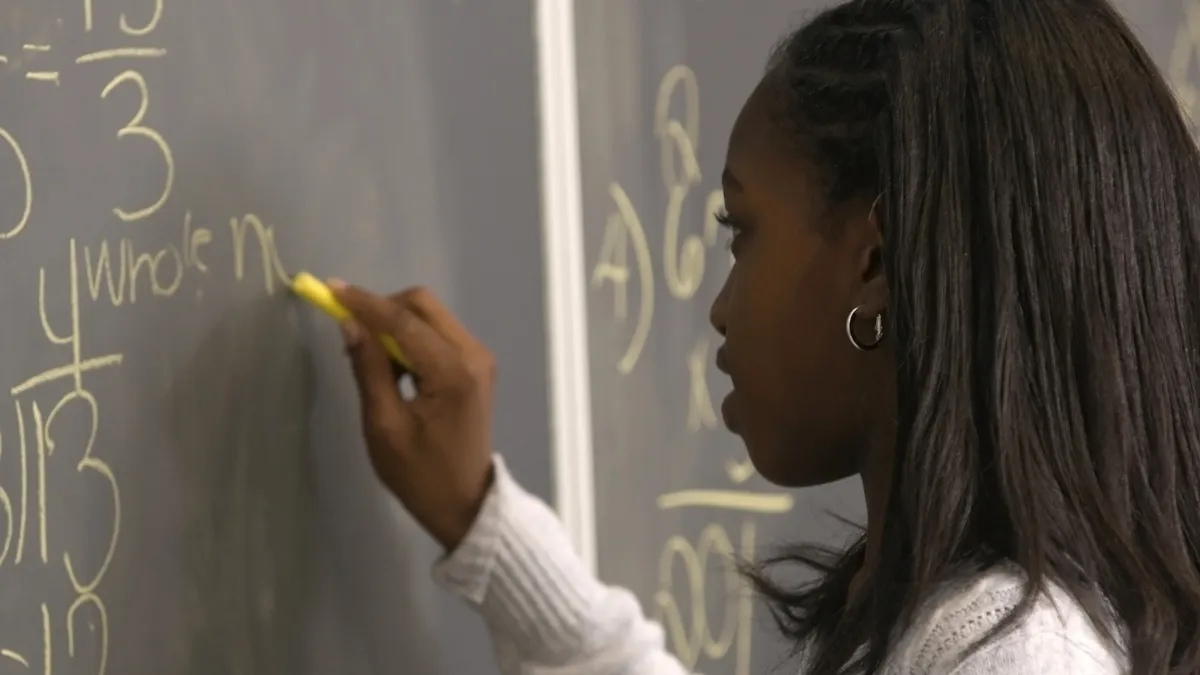Dive Brief:
- As a student begins a math assignment, his or her mindset can influence whether the student feels a connection to the material or not, according to Education Week, citing an upcoming study in Trends in Neuroscience and Education.
- With an EEG, or an electroencephalogram, researchers collected brain activity in college students, tracking how they reacted as they worked through standard math problems as well as alternative tasks designed to help students gain better math skills.
- Students who worked on the standard math problems more often ended up with answers that were correct. But those students who worked on the alternative problems showed brain activity that researchers associate with motivation, hoping their results could help educators find ways to encourage all students to get better in math.
Dive Insight:
When students struggle in math instead of getting the support they need, they often decide that they aren't good in the subject or that they aren't a "math person." Such students sometimes quietly slip toward the back of a classroom, stop raising their hands and no longer have the motivation to try. That scenario plays out in schools every day, but the sooner educators recognize that students are stuck, the sooner they can introduce new strategies to help students understand the concepts and stay on track.
With math, teachers — especially at the elementary level — might also be revealing the trepidation they have for the subject themselves. As Education Dive reported in 2018, teachers who aren’t comfortable with math may also have trouble teaching the subject and may be projecting their discomfort to students — whether they realize it or not. Professional development for teachers then is important, to build teachers' confidence in the subject area so that they have the expertise to help students acquire the skills they will need to move on to higher-level math.
Another helpful tool teachers can bring into math classes is a tool called interactive storytelling, which helps children tap into creative and critical thinking tools to unpack math in a different way. This style of teaching can also boost social-emotional learning capabilities in K-12 students, building a connection between the storyteller and the listener and hopefully more deeply embedding the subject — math — in the process.












